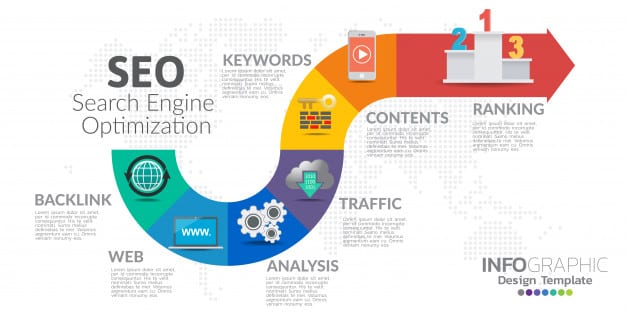In our previous tutorials we’ve discussed the foundations of SEO, and you’ve learned the latest SEO techniques. This week we’ll show you some of the best SEO tools you can use to enhance your SEO rankings.
As we mentioned previously, if you haven
’
t used Google
’
s
Webmaster Tools, that
’
s a great place to start. Webmaster Tools provides you with a number of resources that you really can
’
t afford to live without. The first thing you
’
ll need to do is to create a Google account (if you don
’
t already have one). Then you sign up for Webmaster Tools
–
which will require you to add a small bit of code to the header of your web pages (all the pages that you want Google to track). This allows Google to validate that you own the site in question, and facilitates the tracking of your pages.
Once you have your account, and have added the Google tracking code, you will be presented with the data accumulated from your site. The information that is provided includes:
- Top search queries – Information about user search queries that have returned pages from your site.
- Crawl errors – Issues Google encountered when crawling your site.
- Links to your site – External links to your site
- keywords – The most common keywords Google found when crawling your site. These should reflect the subject matter of your site.
- sitemaps – Sitemaps are used to tell Google about pages on your site they might not otherwise discover.
- Internal links – Pages linked to by other pages on your site.
- Crawl stats – Googlebot activity in the last 90 days
- HTML suggestions – When Googlebot crawls your site, it commonly finds some issues with your content. These issues won’t prevent your site from appearing in Google search results, but addressing them may help your site’s user experience and performance.
- Malware details – If Google discovers any malware on your site, they will be displayed here.
- Site performance – This page shows you performance statistics of your site. You can use this information to improve the speed of your site and create a faster experience for your users.
- Fetch as Googlebot – With Fetch as Googlebot you can see exactly how a page appears to Google.

As you can see, Google Webmaster Tools provides a plethora of valuable information for web developers and website owners. By using these tools, you will be able to evaluate your site’s performance, the use of your keywords, links to your site, both internal and external, and locate any errors or missing pages on your site.
Google Analytics
While Google provides some excellent tools for SEO projects, another tool, Google Analytics, provides detailed stats about your website that can be used to further your SEO efforts.
To use Google Analytics (GA), once again you will need to have a Google account. Assuming you already do, you will need to sign up for GA via the Google MyAccount page. Once again, you will need to add some code to your site’s pages for tracking purposes. Once this has been validated by Google, your site will begin to accumulate data. GA can be a very valuable tool for SEO purposes–and like other Google tools, it’s free!
When you visit the Google Analytics page, you will be presented with the Dashboard, which presents you with a quick overview of your site’s recent statistics.

Among the stats presented are:
- Visits – The number of visitors on your site within the last month.
- Pageviews – The number of pageviews on your site within the last month.
- Pages/Visit – Average Pageviews for all visitors.
- Bounce Rate – Bounce Rate (the percentage of your visitors immediately leave) for all visitors.
- Average Time on Site – The average time visitors remain on your site.
- New Visits – The number of new visitors who have visited your site for the first time.
- Visitor’s Overview – A graph showing the number of visitors to your site.
- Map Overlay – A map showing where your visitors came from.
- Traffic Sources Overview – A pie graph showing the percentage of visitors who came to your site from Search Engines, Direct Traffic, Referring Sites and Other.
- Content Overview – A chart showing the top pages on your site, the number of pageviews they have received and the percentage that those pages make up in your overall stats.
You are able to drill down in each section mentioned above. For instance, if you want to see which articles or content in your site is performing the best, you can check out the Content section of GA, which will show you:
- Top Content – The most requested content on your site.
- Content by Title – Content on your site, listed by the title of the page.
- Content Drilldown – A breakdown of the content on your site with statistics for the top 10 – 500 pages (you can select how many pages to show).
- Top Landing Pages – The top pages that visitors land on when visiting your site.
- Top Exit Pages – The top pages that visitors are on when they leave your site.
Google Analytics also has similar sections for Intelligence, Visitors, Traffic Sources and Goals, and includes Custom Reporting features which allow you to create your own, more specific reports, such as
“
How are my keywords performing in different countries?
”
What Else Can Google Do?
Given that most visitors to your site will come to it via Google, it
’
s valuable and informative to learn all that you can about your site from Google. Another tool you can use to stay on top of the loop is
Google Alerts. Google Alerts enables you to stay informed about any sites, news, blogs, etc. that use your site
’
s keywords. You can use any keyword, and set it up so that it emails you as it happens, once a day or once a week, if it locates the use of said keyword on any website. This can be useful to see how many other sites are using the keyword, how often it is mentioned in the news or blogs, and if Google is picking up the use of the keyword on your own site.
Class Conclusion
Now you know how to effectively work on your site’s Search Engine Optimization. You know how to determine the focus of your site, how to effectively select keywords, write a description, use keywords in your site’s content and titles, what to do to optimize your site for Google’s new Caffeine technology, and how to use Google tools to fine tune your SEO project. See you in the search engines!











